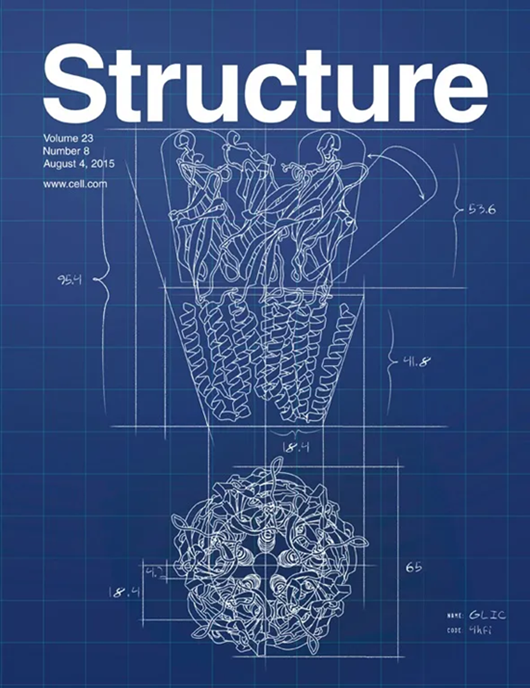Structural insights into the human system y+L amino acid transporter complex
IF 4.3
2区 生物学
Q2 BIOCHEMISTRY & MOLECULAR BIOLOGY
引用次数: 0
Abstract
System y+L facilitates the sodium-independent transport of cationic and sodium-dependent transport of neutral amino acids via heteromeric amino acid transporters. System y+L consists of either SLC7A6 (y+LAT2) or SLC7A7 (y+LAT1) and 4F2hc (SLC3A2). The y+LAT2-4F2hc complex mediates the exchange of L-lysine (Lys), L-arginine (Arg), L-leucine (Leu), and L-glutamine (Gln) and is important for the glutamate-glutamine cycle and ammonia clearance. c-Myc-driven upregulation of y+LAT2 in cancer enhances amino acid uptake and mTORC1 activation, promoting tumor growth. Its transport mechanism has remained unclear. Here, we determined the cryoelectron microscopic (cryo-EM) structures of the y+LAT2-4F2hc complex bound to either Arg or Leu at 3.60 Å and 3.58 Å resolution, respectively, revealing an outward-open conformation. Our structural analysis highlights conformational changes during transport, and functional assays validate critical residues involved in substrate binding and transport. These findings elucidate the molecular mechanism of the system y+L and provide a foundation for developing targeted therapies against y+LAT2.

人体系统y+L氨基酸转运复合物的结构见解
系统y+L通过异聚氨基酸转运体促进阳离子的钠依赖性转运和中性氨基酸的钠依赖性转运。系统y+L由SLC7A6 (y+LAT2)或SLC7A7 (y+LAT1)和4F2hc (SLC3A2)组成。y+LAT2-4F2hc复合物介导l -赖氨酸(Lys)、l -精氨酸(Arg)、l -亮氨酸(Leu)和l -谷氨酰胺(Gln)的交换,对谷氨酸-谷氨酰胺循环和氨清除很重要。癌症中c- myc驱动的y+LAT2上调可增强氨基酸摄取和mTORC1激活,促进肿瘤生长。其运输机制尚不清楚。在这里,我们分别以3.60 Å和3.58 Å的分辨率确定了y+LAT2-4F2hc配合物与Arg或Leu结合的低温电镜结构,显示出外向开放的构象。我们的结构分析强调了运输过程中的构象变化,功能分析验证了参与底物结合和运输的关键残基。这些发现阐明了y+L系统的分子机制,为开发针对y+LAT2的靶向治疗提供了基础。
本文章由计算机程序翻译,如有差异,请以英文原文为准。
求助全文
约1分钟内获得全文
求助全文
来源期刊

Structure
生物-生化与分子生物学
CiteScore
8.90
自引率
1.80%
发文量
155
审稿时长
3-8 weeks
期刊介绍:
Structure aims to publish papers of exceptional interest in the field of structural biology. The journal strives to be essential reading for structural biologists, as well as biologists and biochemists that are interested in macromolecular structure and function. Structure strongly encourages the submission of manuscripts that present structural and molecular insights into biological function and mechanism. Other reports that address fundamental questions in structural biology, such as structure-based examinations of protein evolution, folding, and/or design, will also be considered. We will consider the application of any method, experimental or computational, at high or low resolution, to conduct structural investigations, as long as the method is appropriate for the biological, functional, and mechanistic question(s) being addressed. Likewise, reports describing single-molecule analysis of biological mechanisms are welcome.
In general, the editors encourage submission of experimental structural studies that are enriched by an analysis of structure-activity relationships and will not consider studies that solely report structural information unless the structure or analysis is of exceptional and broad interest. Studies reporting only homology models, de novo models, or molecular dynamics simulations are also discouraged unless the models are informed by or validated by novel experimental data; rationalization of a large body of existing experimental evidence and making testable predictions based on a model or simulation is often not considered sufficient.
 求助内容:
求助内容: 应助结果提醒方式:
应助结果提醒方式:


